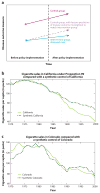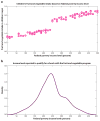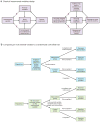Evaluating the Health Impact of Large-Scale Public Policy Changes: Classical and Novel Approaches
- PMID: 28384086
- PMCID: PMC5815378
- DOI: 10.1146/annurev-publhealth-031816-044208
Evaluating the Health Impact of Large-Scale Public Policy Changes: Classical and Novel Approaches
Abstract
Large-scale public policy changes are often recommended to improve public health. Despite varying widely-from tobacco taxes to poverty-relief programs-such policies present a common dilemma to public health researchers: how to evaluate their health effects when randomized controlled trials are not possible. Here, we review the state of knowledge and experience of public health researchers who rigorously evaluate the health consequences of large-scale public policy changes. We organize our discussion by detailing approaches to address three common challenges of conducting policy evaluations: distinguishing a policy effect from time trends in health outcomes or preexisting differences between policy-affected and -unaffected communities (using difference-in-differences approaches); constructing a comparison population when a policy affects a population for whom a well-matched comparator is not immediately available (using propensity score or synthetic control approaches); and addressing unobserved confounders by utilizing quasi-random variations in policy exposure (using regression discontinuity, instrumental variables, or near-far matching approaches).
Keywords: difference-in-differences; instrumental variables; near-far matching; propensity score; regression discontinuity; synthetic controls.
Figures






References
-
- Abadie A, Diamond A, Hainmueller J. Synthetic control methods for comparative case studies: estimating the effect of California’s tobacco control program. J Am Stat Assoc. 2010;105:493–505.
-
- Angell SY, Silver LD, Goldstein GP, Johnson CM, Deitcher DR, et al. Cholesterol control beyond the clinic: New York City’s trans fat restriction. Ann Intern Med. 2009;151(2):129–34. - PubMed
-
- Angrist JD, Pischke J-S. Mostly Harmless Econometrics: An Empiricist’s Companion. Princeton, NJ: Princeton Univ. Press; 2008.
-
- Austin PC. The relative ability of different propensity score methods to balance measured covariates between treated and untreated subjects in observational studies. Med Decis Making. 2009;29:661–77. - PubMed
Publication types
MeSH terms
Grants and funding
LinkOut - more resources
Full Text Sources
Other Literature Sources
Medical

